Temple Caves
- By Katharine
- 18 March, 2014
- No Comments
Shivaji S. and his wife arrived at my hotel Saturday morning, bearing a single red rose, to see me off. Shivaji spoke no English, and I spoke no Marathi, but he indicated he wanted a photo of me with his wife. (At least three dozen people asked for photos with me in Kolhapur. Translation: “Look! I met this strange firang today, traveling on her own without her husband!”) Before I left Kolhapur by private driver, I call Girish on my mobile and he gave the driver precise instructions about where on the highway to Aurangabad the driver should stop, so Girish could say goodbye to me. Girish’s village was exactly 7 km from my hotel, and sure enough, Girish was waiting by the side of the highway. To my surprise, he gave me a hug and several kisses on the cheek, while I thanked him for all his help.
I spent the next 11 hours traveling 500 kilometers north to Aurangabad, which would be my base for visiting the caves at Ajanta and Ellora. I had a choice between sitting up front in the “death seat” and buckling up, or sitting in the back, where – for some reason that escapes me – taxi drivers often have shoulder belts, but no buckles to buckle them into. Perhaps it’s because they regularly take more than two or three passengers in back and don’t want anyone to feel left out? I chose to go beltless in back, deciding it would be less stressful to simply gaze at the scenery out the side window instead of watching every near-collision from the front.
Why a private driver? It was certainly an extravagance, but seemed well worth it to me, primarily for safety reasons (despite the lack of seat belts). There are no flights between Kolhapur and Aurangabad, no trains most days — and when there are trains, they take nearly 24 hours — and no daytime buses. The only other option was overnight “sleeper” buses, on which A) I would get no sleep, and B) most likely be the only woman, and thus be worried the whole time about the safety of both my person and my belongings. See A).
The drive took us through beautiful farmland and near-desert landscapes; over several large rivers flowing from the high plains toward the Indian Ocean; past factories, colleges, and blocky new apartment buildings, as well as small fields where itinerant farm workers live in clusters of “teepees” made from reeds, plastic sheeting, and other scrap material; small, unpainted shrines and large, candy-colored temples; an hour-long traffic jam in Pune; and village homes and stores with ads for Vodafone and JayPee Cement painted on the walls. The pollution started me coughing again, the disadvantage of having a non-A/C car. My driver gamely tried to point out some sights along the way and explain what crops were being grown, but his English wasn’t very good when it came to my asking him to stop at a “hotel” (these are restaurants for travelers alongside the highway) so I could use the bathroom. As a result, I had to ration my water, despite the heat.
The Lemon Tree Hotel in Aurangabad was by far the fanciest I stayed at during my trip. It had a buffet for three meals a day with a huge variety of both Indian and non-Indian food. Chinese cuisine is very popular in India, and the Citrus Cafe even had a custom fry-up of Mongolian noodles and vegetables on offer one evening – delicious! My stomach, which had been rebelling at the spiciness of everything in Kolhapur, finally got a much-needed break. Other than meals, though, I spent little time there. The day after my marathon car ride, I spent another 11 hours in a taxi visiting the so-called caves – all man-made and carved out of solid rock – at Ajanta and Ellora.
We started with Ajanta in the morning, as it was furthest away. All the caves were carved by Buddhists high into the side of a horseshoe-shaped cliff overlooking a small river gorge, starting in the first or second century B.C. and ending about 1,000 years later. They lay overgrown and neglected for another millennium until a British hunting party rediscovered them in the 1800s. Today’s tourist approaches the cave complex via electric bus, and then climbs up several flights of steps or ramps to the walkways connecting the cave entrances. (There’s also a winding, pastoral path of two or three kilometers down by the river, but I didn’t have time for the walk.) For the elderly or infirm, there were litter chairs carried by four “porters” each up the ramps to the start of the cave complex.
Most of the caves feature a decorative entrance gate leading to a central court surrounded by carved pillars, and a series of small, stark meditation rooms off the sides. Some of the caves have flat, painted ceilings, whereas others have arched ceilings with ribs imitating the look of wooden beams, but all carved out of rock. At the back of nearly every cave sits a central chamber containing a large statue of the Buddha, who is seated in the lotus position and holding his hands in the teaching mudra. Some of these Buddhas are accompanied by rapt students below or spirits hovering in the sky above. Yet in many ways, the Buddha statues – meant to be the most impressive feature of each cave – were the least interesting. They all looked pretty much the same, the Buddha’s serene lack of expression echoed in his smooth, stylized limbs and unvarying posture.
Far more fascinating were the sculptures and paintings of other figures on the walls of the galleries: scenes from the life of the Buddha; temples and markets; dancing women and musicians; lords mounted on elephants and warriors on horseback; tigers and monkeys; palaces and spreading trees. These frescoes are colorful and remarkably expressive. The one exception to the boring Buddhas is a giant, reclining Buddha in one cave. In another cave, a government guide stood in the entranceway to the Buddha chamber and chanted “Om,” and it set the entire cave reverberating. I can only imagine what it must have been like when lots of monks sat in the caves and chanted — although it might have set off rockslides. (There were cautionary signs everywhere warning of rock slides during monsoon season.)
On my way back down to the parking lot where my driver was waiting, I had to run the gantlet of people desperate to sell me souvenirs I didn’t want. As soon as we got onto the road proper, my taxi driver realized he had a flat tire and pulled over to the shoulder. It took him about 15 minutes to put on a spare, as two flocks of sheep flowed past us the way a stream parts to flow around a boulder. With the spare on, we climbed back up a series of switchbacks to a hotel catering to all the non-Indian tourists, where I ate lunch while my driver ran across the road and had the tire repaired. Then we hightailed it 100 kms back to Ellora, where I bought a ticket less than two hours before the caves’ closing time.
The Ellora complex turned out to be much more spread out than Ajanta, and I sadly realized I should have made a second, half-day trip there. Another World Heritage site, it features old and newer Buddhist caves, Hindu caves, and Jain caves, as successive religions dominated the area. Remarkably, none of the area’s rulers felt the need to destroy the work of his predecessors, and in fact many worked to preserve it as a multi-faith holy site. Having seen only Buddhist caves at Ajanta, I decided to focus on the four Jain caves and the most interesting Hindu caves. We drove up to the Jain caves, where a government guide (who nonetheless expected a tip) showed me the remains of some remarkable paintings. I know little about the Jain saints who were carved into the cave-temple’s walls. However, I learned that most of the paintings had been chipped away in favor of carvings, which the Jains considered a higher art form. The paintings remain only as temporary decorations where the cave’s carvings were unfinished. The carved figures were remarkably curved and detailed.
Finally, the driver took me to Cave 16, also known as the most magnificent kailasa, or temple, among the Hindu caves. It was truly astounding. Carved into a rock cliff from the outside in, by thousands of workers over 200 years, it featured an ornamented gate, a huge courtyard, two life-sized carved elephants “guarding” the inner entrance, a large gallery of ornamented pillars around three sides, and a central temple to Shiva rising three stories high and meant to imitate the mountain where the gods reside. The carvings were magnificent: an estimated 80 elephants “held up” the base of the central temple. Hindu gods and their avatars were carved all around the gallery and into every nook and on every wall.
Two large walls on either side of the central structure held a series of scenes featuring tiny figures; according to my guidebooks, the Ramayana is retold in some of these carvings. Finally, when I climbed to the top, innermost chamber of the central structure, there was a temple with a large Shiva lingam and yoni. A fire burned at the base of the yoni, and a constant stream of people offered incense, money, and flowers. This one part of the tourist site is still a living, breathing temple of pilgrimage for many Hindus.
I spent 45 minutes wandering around inside the kailasa without a guidebook or guide, just soaking up the atmosphere. It had started to drizzle; thunderheads threatened overhead and a fresh wind picked up, bringing smells of wet stone and incense, urine and flowers, while the elephants stood silent guard over all. I felt very small in this ancient place, the work of 10 generations of architects and sculptors. It was the most beautiful, sacred part of India I visited. After Cave No. 16, I had no desire to check out the neighboring caves, even though I had another few minutes. Nothing could have topped it.
The caves proved a great way to end my trip to India. I won’t detail the frustrations of flying from Aurangabad to Delhi only to find out I had to leave the airport and was not allowed to re-enter it, check my bag, go through security, and get to the sleeping pod I’d reserved in the international departures wing until a meager 3 hours before my flight. I was fortunate that just the previous day, Emirates Air had started direct flights from Dubai to Boston, so I only had to change planes in Dubai, not in New York. And John had booked a Flightline van to bring me directly home. Nonetheless, I only managed a few catnaps over 44 hours, and a week later I’m still feeling a bit like a zombie. India is halfway around the world, and I still wake up every night around midnight and think, “Time to get up!”
Note: I plan one more post, on things I miss about India, things I don’t, and recommended reading. Check back in a couple of days!

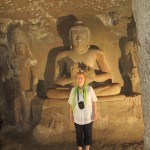
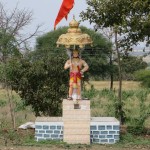
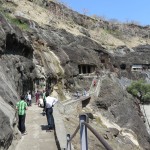
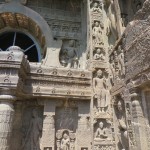
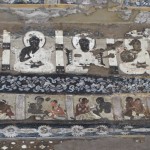
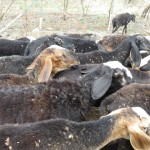
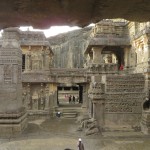
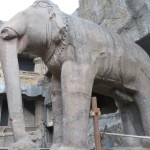
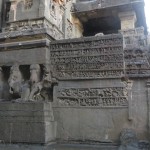
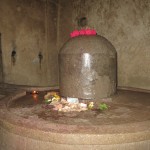
 Copyright © 2025
Copyright © 2025
Leave a Reply